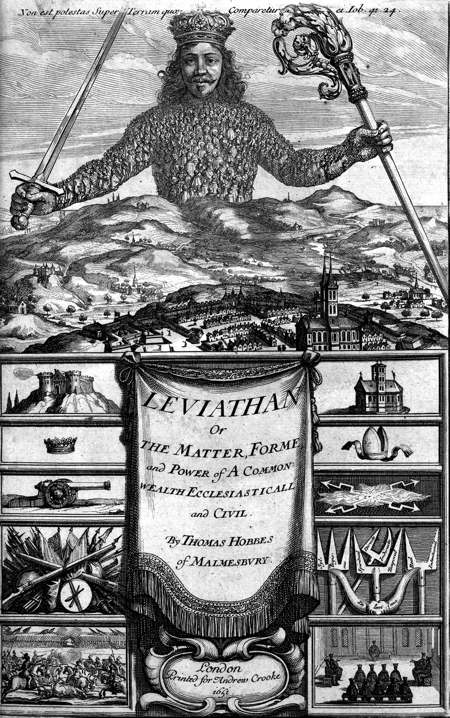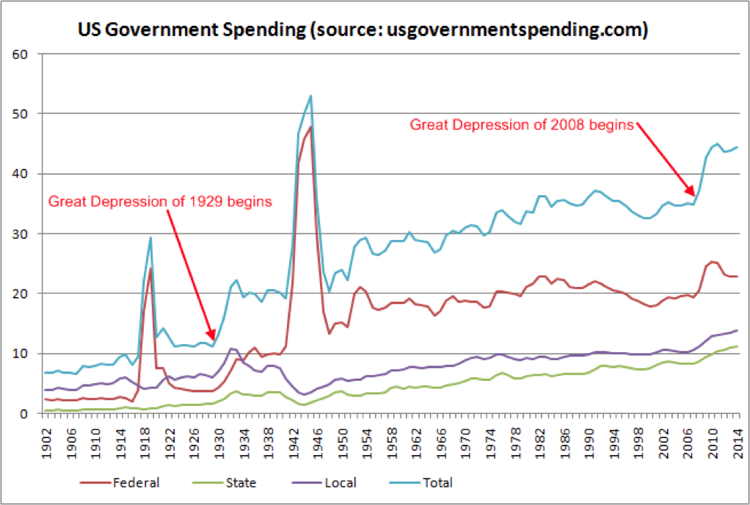[Note: This post is part of a series on the History of the Classical Liberal Tradition]
It is often the case that you do not articulate clearly what you are “FOR” until you are forced to, by being challenged by something you know you are “AGAINST”. I think this can be said about the CLT so I will begin by discussing what CL were against.
These things of course varied over time and place and CLs reacted accordingly, emphasising different things at different times (such as religion in the 16th and 17th centuries, taxation and trade policies in the 18th, and constitutional limits on the power of the state in the late 18th and 19th centuries). In spite of this variability, it is nevertheless possible to draw up a list of “key ideas” which CLs kept turning to in their struggle to oppose or restrain the power of the state. This will be the subject of another post.
Part I – The Early Modern Period (17th and 18th Centuries)

[Hobbes’ famous depiction of the “Leviathan” state, which consisted of “Throne” (and Barracks) to the left, and “Altar” to the right. See my illustrated essay on Thomas Hobbes’ Iconography of the Leviathan State (18 December, 2020) and a longer version on this topic.]
CL (or rather what one might call “proto-liberalism” or “early liberalism” as no-one called themselves “liberal” at the time, – this would only occur for the first time in the early 19thC) first emerged as a reaction to the growing power of the absolutist state and church in early modern Europe in the 16th and 17th centuries. The Catholic Church had its religious monopoly challenged by the rise of “protestant” churches during the Reformation. Increasing rivalry between dynastic states led to more wars and the need to fund and supply much larger permanent (standing) armies which in turn required a larger and better organised state (the fiscal-military state) with much greater taxing powers and a more sophisticated system of “public finance” (or state debt).
The first rumblings of dissent appeared in the mid-17th century with a series of tax revolts during the Thirty Years War (1618-48) and the so-called “general crisis of the 17thC”. These revolts against increased taxation and repression by the state and the Church reached a climax in the Revolutions in America and France in the 18thC which overthrew the old order and introduced new regimes largely based upon liberal principles.
[On “early” or “proto” liberalism see Annabel Patterson, Early Modern Liberalism (Cambridge University Press, 1997) and Quentin Skinner, Liberty before Liberalism (Cambridge University Press, 1998, 2003).]
The issues which prompted many people to rethink their traditional relationship to the state and the church in the 17th and 18th centuries was a result of numerous factors including:
- the growing power of the monarchy as the state grew and centralised its powers vis-à-vis other traditional power holders such as the landed aristocracy and the church (“Throne” – the monarchy)
- the repression of religious and other forms of dissent following the Reformation (which produced “competitors” in the “religious market” for consumers of religion) and the scientific revolution which seriously challenged Church doctrine (“Altar” – the established Church)
- increasing taxation and debt to fund wars led to a clash between parliaments and the crown over the granting of new tax money, especially during the crisis of the 17thC (the Thirty Years War) (“Barracks” – the military and large standing armies)
- the regulation of trade and the economy in favour of powerful vested interests including members of the aristocracy and preferred industrial and commercial groups (Mercantilism)
- periodic crises of agricultural production caused by poor harvests, the chronic poor productivity of agriculture (Serfdom), and restrictions on trade in agricultural products (tariffs and protectionism)
Part II – The 19th Century
Even after the American and French Revolutions changed the face of Europe and North America CLs had to face other challenges throughout the 19th century because of the incomplete nature of the revolutions in which they had participated:
- the French Revolution and Napoleonic Wars had changed the nature of warfare with the emergence of ideologically motivated, mass armies of citizens which required massive taxation, requisition of supplies, conscription of citizens, the use of economic warfare (blocades) to weaken the enemy, and the creation of more powerful central banks to fund the state’s activities
- the continued existence of slavery in the newly formed United States as well as in the European colonies; the expansion of slavery in the US before 1861 led to bitter debates about its legitimacy and its economic efficiency
- the restoration of the conservative monarchies after 1815 and the struggle for constitutional limits on their powers and the protection of civil liberties (especially freedom of speech, and representation in parliament)
- the rise of economic nationalism (F. List in the German states) and the return protectionism (especially in the US – the so-called “American system of Hamilton) in the late 19thC
- the rise of Nationalism and Wars of Nation Building in Germany (the German Wars of Unification) and the US (the Civil War), and also in Japan) ; this raised the problem for liberals of how to deal with the new force of “nationalism” (the German “National Liberal” movement)
- the expansion of colonialism and imperialism in Asia and Africa
- the rise of socialism, labour parties, Marxism in the late 19th century
- the return of protectionism in the decades leading up to WW1
- the arms race prior to WW1
These developments meant that CLs had to confront several well-organised groups opposed to liberal ideas. These included conservatism (which had a political as well as religious aspect), militarism, protectionism, imperialism, and socialism.
Part III – The 20th Century to the Present
The WW1 was a disaster for CL and saw the collapse of many liberal institutions which had been created in the 19thC and the near abandonment of CL ideas among many people. The “Thirty Years War of the 20thC( WW1 and WW2 1914-1945) was the nadir of the CL movement until its slow revival in the post-WW2 period and the creation of modern libertarian movement in the US in the 1970s.
This graph shows the steady growth of local, state, and the federal government during the 20thC and similar graphs can be drawn up for European countries as well as Australia. What should be noted is what the economic historian Robert Higgs has called “the ratchet effect” where the size and scope of government activity and expenditure increases dramatically during times of “crisis” (war, economic depressions, and now terrorist attacks, banking crises, and epidemics) but does not completely return to the base line after the crisis has passed. Thus there has been a steady “ratcheting up” of the size of the state throughout the 20thC which continues unchecked in the 21stC with no end in sight.

[Growth in Total US Government Spending in the 20thC]
Sidenote: It would be an interesting question to ask socialists and other advocates of government intervention in the economy “how much is enough” to satisfy them? Do they see an end point which, when reached, their demands for increased state spending and intervention and regulation would cease? At 50% of GDP, 60%, 70%, or is it 100%?
CLs have therefore directed their opposition during this period to things like:
- the general phenomenon of the growth of Statism throughout the century
- World War 1 – War Socialism
- post-war hyperinflations and the Great Depression
- the rise of Bolshevism and Fascism post WW1
- the ideas of J.M. Keynes and the use of monetary and banking policy to fund both the warfare state and the welfare state;
- the total mobilisation of the economy in WW2; the emergence duriong WW2 and after of the Military-Industrial Complex
- the post-war welfare state, regulatory state, welfare/warfare state in the US
- surveillance state after 9/11
The developments meant that, even though CL was experiencing a veritable “dark ages” during most of the 20thC, they had to confront both intellectually and politically socialism, Bolshevism/communism, fascism, Keynesianism, the Welfare/Warfare/Surveillance State, and in the 21stC the rise of “Green Socialism” (and now “hygiene socialism”)
A Summary of What CLs were AGAINST
One can summarise what CLs were “against” over this long period of some 400 years because, even though the specific form of coercion, repression, and the violation of individual rights to life, liberty, and property took varied considerably, there were some common features, such as the opposition to:
- arbitrary political power
- arbitrary religious power
- slavery & serfdom
- war & conscription
- taxation
- national debt
- tariffs & other trade protection
- subsidies & monopolies to favoured industries
- central banks & fiat money
- empire & colonies
- censorship
- torture, arbitrary arrest & imprisonment, execution
